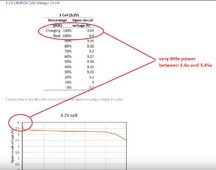As the title says. I am a battery pack reseller in local.
Can I top balance the cells,
Then bring it down to 3.37Vpc(using EBK 40AL charger/discharger)
And store it? For maybe several months?
Reason for wanting to do this is so that I can quickly assemble the cells for a particular order without requiring alot of time for balancing and stuff.
All I want to do is the cells are around equal or very slightly different SoCs so that I can quickly assemble them.
Will it be harmful to the cells?
(PS: Currently there are cells that are not matched and their SoC maybe all over the place.)
Can I top balance the cells,
Then bring it down to 3.37Vpc(using EBK 40AL charger/discharger)
And store it? For maybe several months?
Reason for wanting to do this is so that I can quickly assemble the cells for a particular order without requiring alot of time for balancing and stuff.
All I want to do is the cells are around equal or very slightly different SoCs so that I can quickly assemble them.
Will it be harmful to the cells?
(PS: Currently there are cells that are not matched and their SoC maybe all over the place.)





